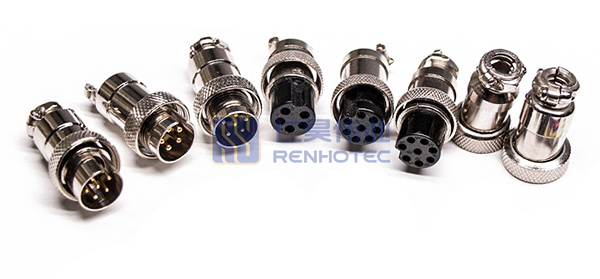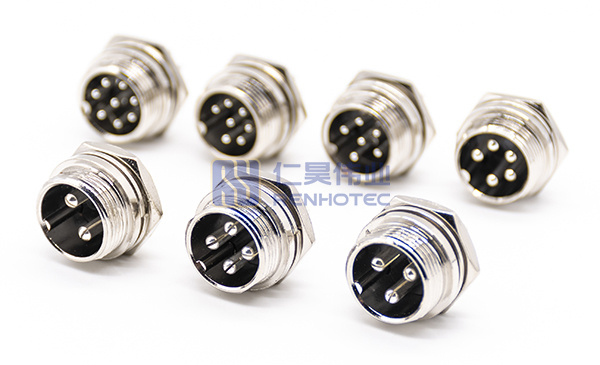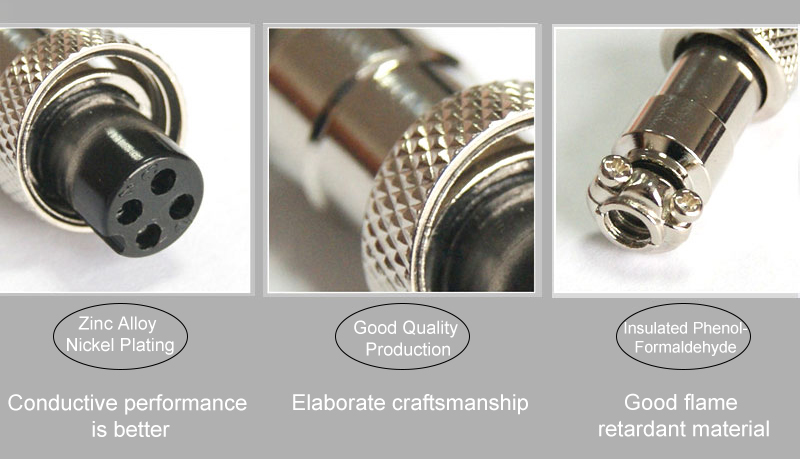M Series Connectors
Are lightweight triplestart ratchet coupling type connectors designed for avionics, aerospace, Harsh Environment Connectors, security, motorsport and heavy duty applications.
Aviation connector is widely used in various circuits to connect or disconnect circuits. Do you know how to distinguish aviation plugs and aviation sockets? Let’s take a look at the difference between them.
Aviation plugs, being instrumental connectors, find extensive utility in the realms of aviation, aerospace, and power, with an especially prolific application aboard aircraft. Embracing a metallic casing and screw fastening, they possess an innate capacity to automatically insert and secure resolutely, thus ensuring the veracity of their connections. The dimensions and core numbers of aviation plugs are subject to variation contingent upon their diverse purposes.

Aviation sockets, as maternal components of the connector system, boast corresponding orifices aligning with the pins or needles of aviation plugs. Typically affixed to panels or casings within aircraft, aviation sockets facilitate convenient interconnections, effectuating the transmission of signals, power, or data among linked devices. Their primary functions encompass signal transmission and power coupling, with available connection mechanisms such as push-pull self-locking and threaded rotary interfaces. Moreover, their protective grades span a gamut of distinctions, ranging from IP44 to IP69, dictating their adaptability to diverse environments and applications.

In summation, aviation plugs and sockets stand as symbiotic connector components, enacting a pivotal role within the realms of aviation, aerospace, and beyond. With utmost diligence, they safeguard the seamless operation and communicative dissemination of equipment, ensuring the fluidity of their function and interaction.
Suitable for larger-sized contact points and aviation plugs operating in environments with strong vibrations. This connection method allows for the installation of fuses to prevent loosening after connection. Though highly reliable, the disengagement process may be slower.
This offers a dependable and swift means of connection and disconnection. Most motorized aviation plugs have a bayonet connection and their connection and locking status is readily apparent. It can be observed through a small hole in the side of the plug’s connecting nut.
This versatile method finds widespread application. When connecting and disconnecting the plug and socket of electric aviation plugs. They typically undergo reciprocating linear movements without twisting or rotating, requiring only a minimal working space to achieve seamless connections and disengagements.
These connection methods are widely applied in the aviation domain. Opting for the appropriate connection method based on specific application scenarios and requirements ensures both the reliability and safety of the connections.
1.Enhanced ease of maintenance. Aviation cable connectors facilitate the replacement and repair of electronic components in case of malfunctions, leading to reduced maintenance time and costs. This, in turn, improves the reliability and maintainability of the equipment.
2.Convenient assembly and mass production. The use of aviation cable connectors streamlines the assembly process of electronic products and supports their mass production. This increases production efficiency while lowering manufacturing costs.
3.Technological upgrades and cost savings. With technological advancements, newer and more advanced components can replace older ones, leading to cost savings and improved product performance and quality.
4.Augmented design flexibility. Engineers working on modern aviation cable connectors possess greater design flexibility when creating new products. They can better structure and optimize the components, achieving highly integrated systems that cater to diverse application needs.

Aviation plugs and sockets serve as crucial components in aircraft equipment, facilitating circuit connections. When selecting aviation plugs and sockets, it is imperative to consider the electrical parameters of the plugs themselves. Thus, the appropriate aviation plugs and sockets must be chosen and utilized correctly to ensure the reliability of the circuits.
The myriad types of aviation plugs cater to a wide range of applications. Therefore, making the right choices in aviation plugs is a pivotal aspect in enhancing their reliability. It is only through the concerted efforts of manufacturers and users that the full potential of aviation plugs can be harnessed.
Aviation plugs can be classified based on various criteria. According to frequency, there are high-frequency and low-frequency aviation plugs. Based on shape, there are circular connectors. In terms of application, there are aviation plugs for cabinets, audio devices, power supply, as well as specialized aviation plugs for specific purposes.
By thoughtfully considering the above factors and categories. One can choose the best aviation plugs and sockets to create a more reliable environment for aviation connections.

If you have any needs for our company’s products, please contact us by phone or email:
Mobil:(+86)18086610187
Email:[email protected]